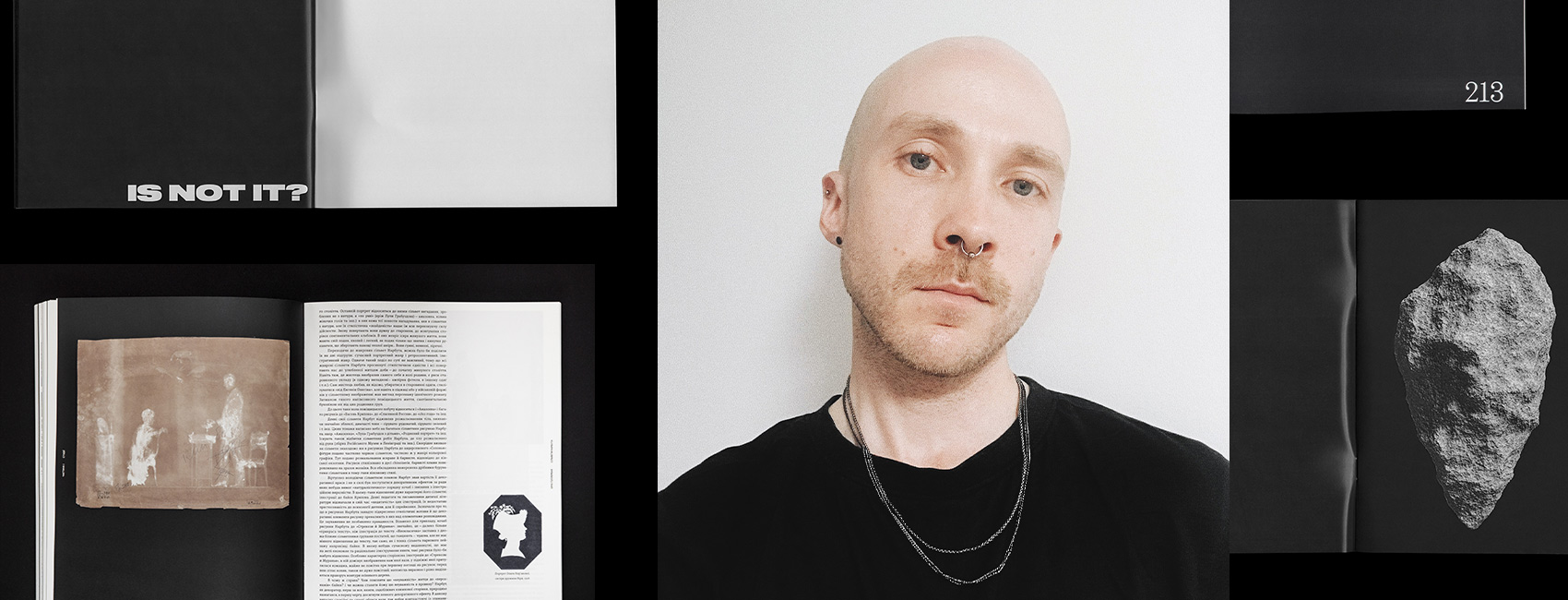* ESC - close the search window
Chytomo Spotlights
Exploring Beyond Shevchenko: A look at the vibrant She.Fest in Moryntsi
19.09.2023
In late August, the eighth annual two-day Taras Shevchenko festival, She.Fest 2023, was held in Moryntsi. Despite challenges due to the full-scale war last year, with some founders now in the armed forces or volunteering, the event attracted several thousand attendees.
A rich program with a musical emphasis
The festival featured 12 venues, but only the Enlightenment Glade was dedicated to literary events, set in the picturesque park behind the craftsmen’s fair. The Glade had a modest stage for performances, with hay bales providing seating. Nearby were two mini-booths hosting the Glade’s lecturers: Larysa Nitsoi’s stand, where her books were sold, and the Vihola publishing house, showcasing founder Olha Dubchak’s books. Another stand allowed attendees to purchase books by making a donation.
The Enlightenment Glade operated from 11 a.m. to 5 p.m. on both festival days, hosting a total of seven events dedicated to literature, book publishing, or Taras Shevchenko himself. A variety of musical bands also took the stage, some performing on both days. An essential requirement for these bands was to include in their repertoire at least one song based on Shevchenko’s poem.
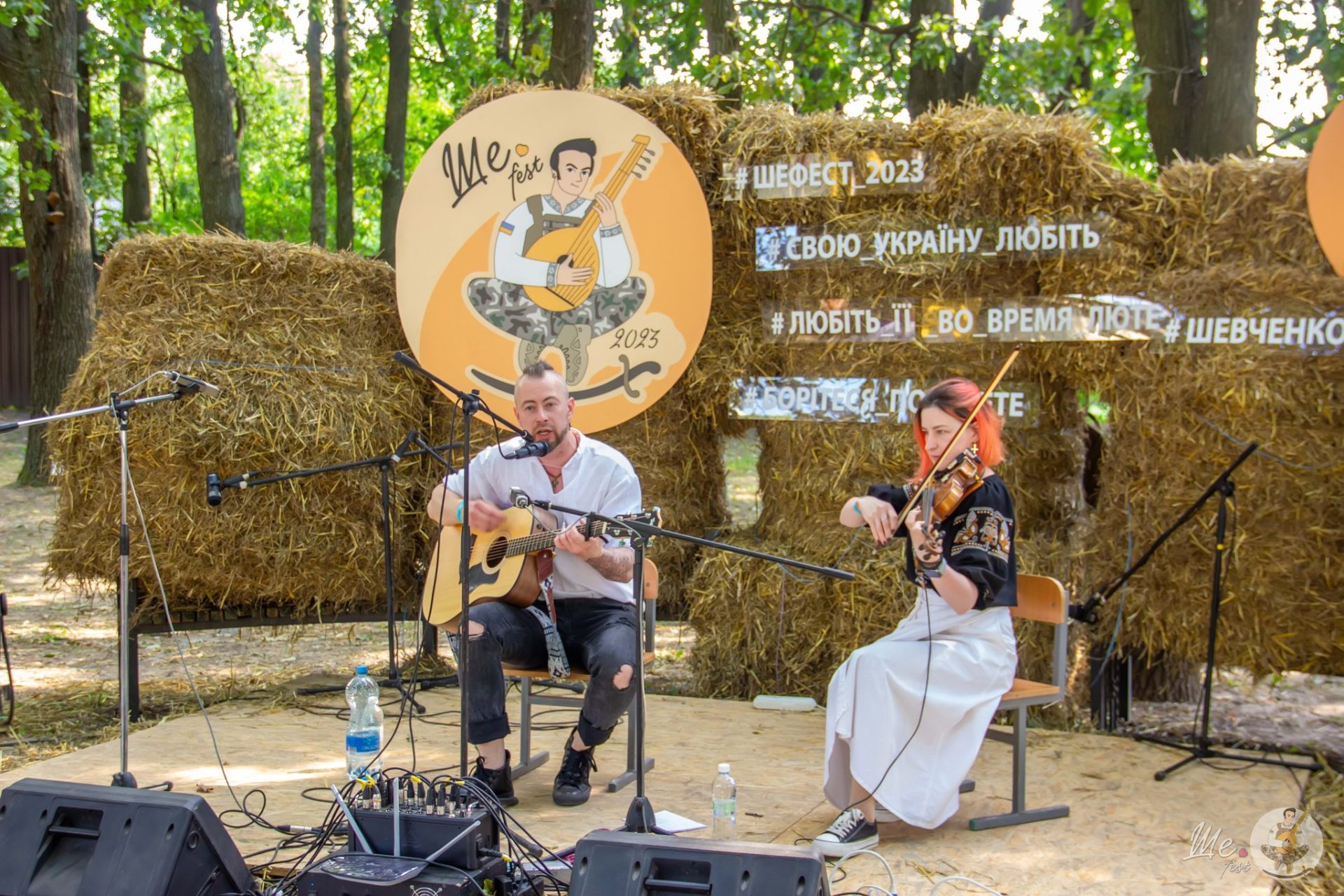
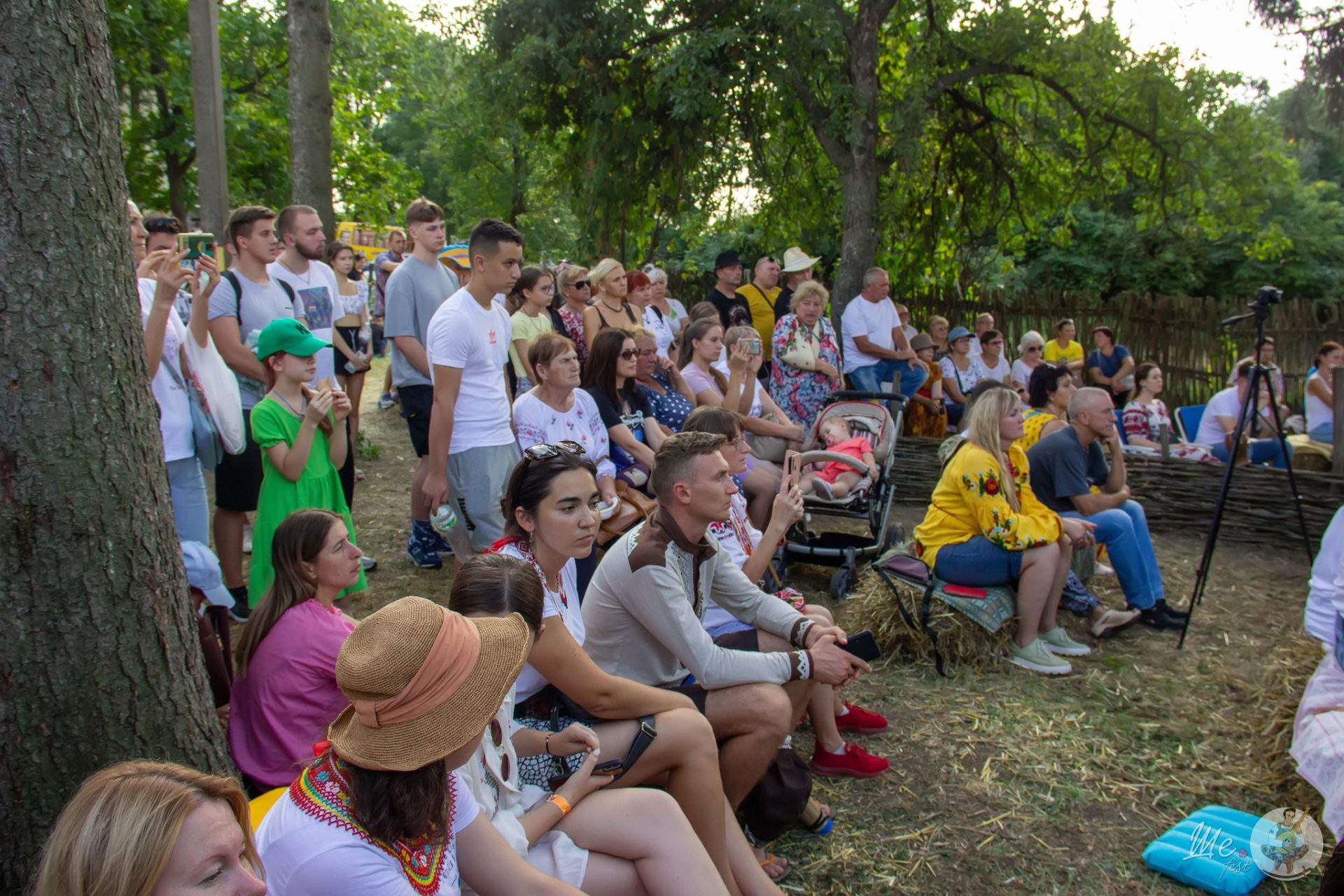
Events with a stronger ties to literature included presentations by Sashko Lirnyk and Larysa Nitsoi. Sashko Lirnyk enchanted the audience with fairy tales, while Larysa Nitsoi discussed the significance of the Ukrainian language in raising children. Following these performances, Mykhailo Nazarenko delivered a lecture on the period in Ukrainian literature spanning from Kotliarevsky’s “ Eneida” to Shevchenko’s “Kobzar.”
During the lecture, an air raid alarm suddenly sounded, prompting the participants and the lecturer to seek refuge in a shelter. There, they united in song, singing “Chervona Ruta” before resuming the lecture. This poignant moment emerged as one of the most touching experiences on the festival’s opening day. Hundreds of people gathered in a dimly lit basement, harmonizing in unison amidst the backdrop of several audible warning sirens echoing from the outside—a deeply poignant scene.
Later on, Olha Dubchak, a writer and the editor-in-chief of the Vihola Publishing House, presented her upcoming books: “Seeing in Ukrainian: The Word in the Linguistic Picture of the World”, “Winning in Ukrainian: On the Language of Hate and Love”, “Hearing in Ukrainian: In the World of Sounds and Letters.”
“This is my first visit to the festival, and I’m amazed by the large number of people at the Enlightenment Glade. The festival is perfectly organized. Thank you for the invitation,” she said.
Another literary event featured the presentation of the poetry collection “Nezlamnii/For Invincible,” showcasing poems by active members of the Armed Forces, including Yaryna Chornohuz, Pavlo Vyshebaba and Vitaliy Birchak. Additionally, military themed event included a lecture by Oleksandr Ratushniak, a member of the military and Ukrainian literature teacher, emphasizing the significance of Shevchenko’s works for the AFU. Moreover, a poetry battle took place at the Enlightenment Glade, ending with two military participants as finalists. The audience acclaimed the soldier known by the call sign Rubik as the best poet.

Among the festival’s diverse locations was the Art Glade, dedicated to artistic events primarily for children. Additionally, the Children’s Glade hosted activities that included reciting Shevchenko’s poems, lessons on using toy sabers, and naturally, singing songs about the dog Patron.
The Theatre Stage, situated within the Moryntsi Palace of Culture, featured several notable performances. The Vinnytsia Academic Music and Drama Theatre, named after Mykola Sadovsky, presented Wolfgang Borchert’s “The Man Outside,” while the Kirovohrad Academic Music and Drama Theatre, named after Mark Kropyvnytsky, showcased “The Price of Life” by Karel Capek’s play “Mother.”
RELATED: ‘Bridge of Paper’ festival in Uzhhorod: military topic in the air and German-Ukrainian relations
Meanwhile, the Folk Stage, bustling and likely the liveliest among all the locations, hosted performances by amateur folk bands from the Cherkasy region. The stage buzzed with activity for two days, allowing nearly all small folk bands from the region to present their artistry. Among the well-recognized names was Taras Kompanichenko from the Kozatska Chorea. For some reason, Natalia Kompanichenko’s lecture on Taras Shevchenko’s relatives from Moryntsi, which might have been suited for the Enlightenment Glade, unexpectedly took place amidst the musical performances on the festival’s second day.
The music scene featured separate from the Folk Stage performances by Kozak System and Kolir nochi (Ukr. “Colour of the Night”) as the headliners.
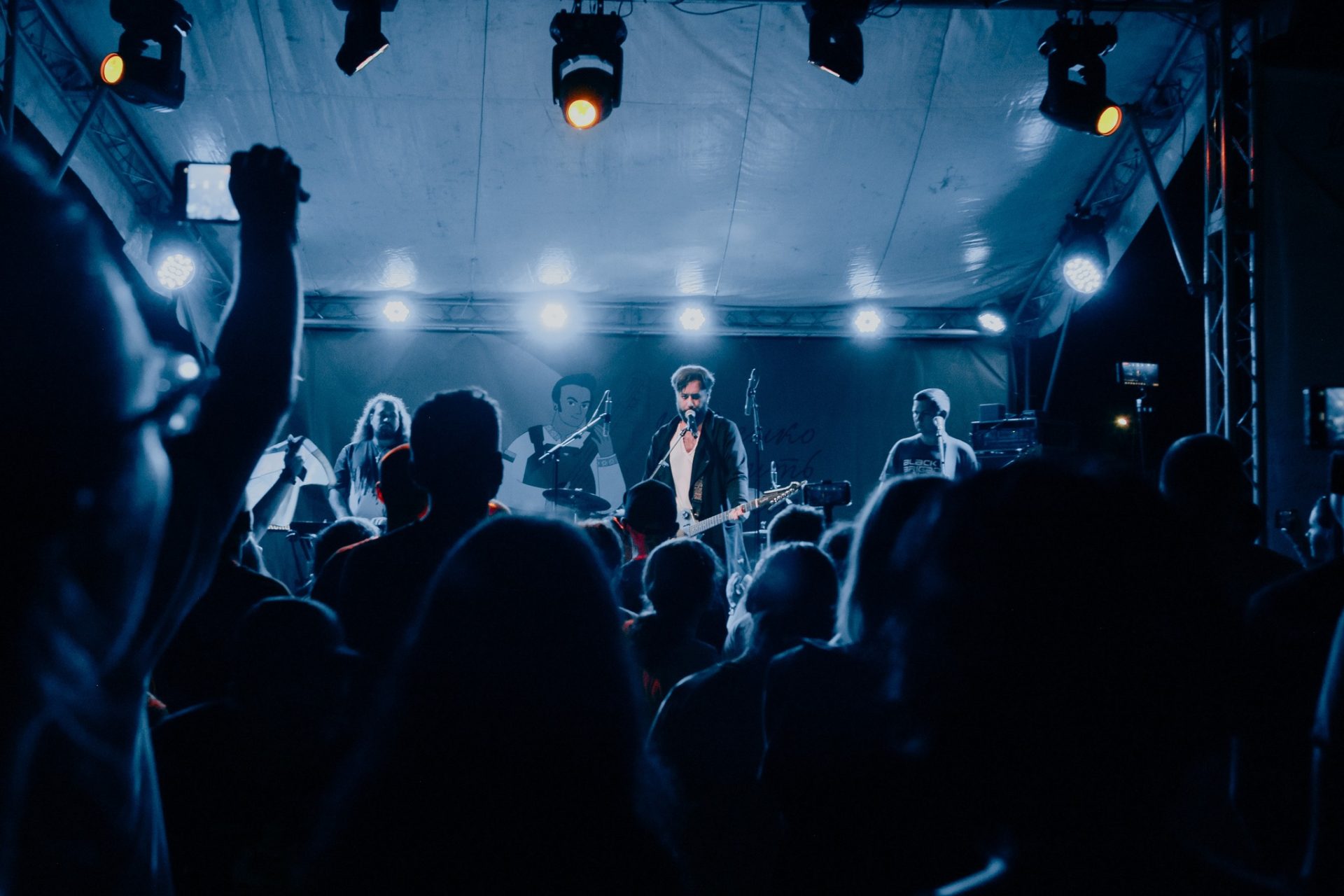
During the festival, visitors could explore the She-Museum in the village’s house of culture, which detailed the history of the seven preceding festivals since its beginning in 2014. A little distance away, a tent city and food stalls were set up, creating an ambiance more akin to a traditional village celebration than a typical festival. The lively atmosphere, with its cheerful crowds and food queues, was heartening, though it was fitting that this section was located separately from the primary festival areas.
The festival intentionally diverges from Shevchenko, yet the question remains: does it effectively fill the thematic void?
This year’s festival had the slogan “Shevchenko Resists.” Yuliia Kapshuchenko-Shumeiko, the festival’s founder, revealed that this theme was created in 2021 and intended for the 2022 event, which unfortunately did not occur due to the full-scale Russian invasion. The initial visual concept centered around Shevchenko-Mamai.
“In discussions with Shevchenko scholars about his militarism, we decided to emphasize Shevchenko’s notions of struggle rather than focusing solely on his literary works,” Kapshuchenko-Shumeiko explains.
“This festival was completely different from its predecessors. We adjusted the format to suit the current circumstances, moving away from the large entertainment part. Nevertheless, this year’s She.Fest carried significant weight in terms of its thematic depth. For the first time, the festival didn’t solely address Shevchenko himself, but rather highlighted the ideals of a liberated Ukraine, originally articulated by Taras in his work, and now being realized through the efforts of our military,” states Yana Plotnitska, the festival’s communications and SMM manager.
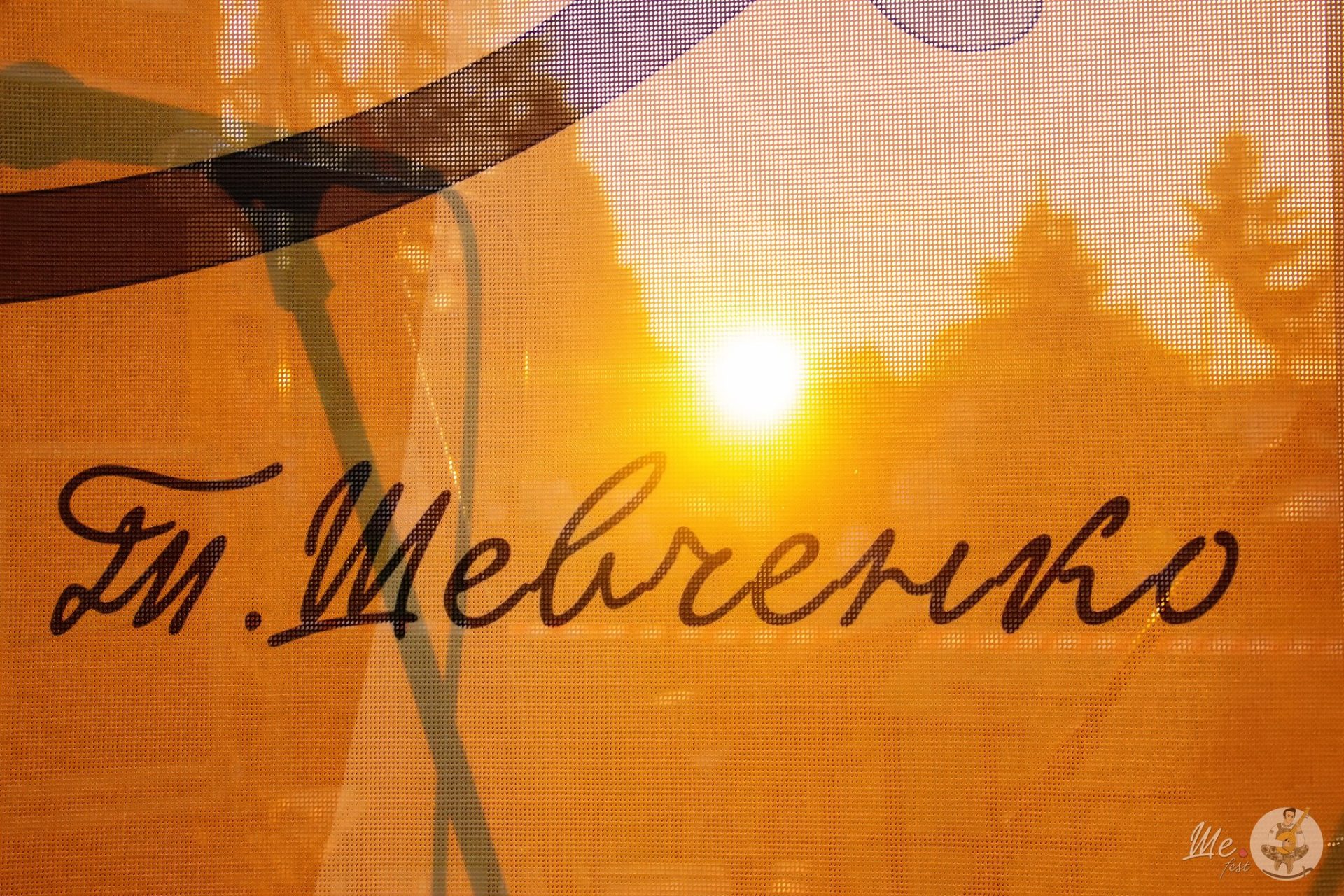
The festival’s inception came from a request by Dmytro Kolosha, now a soldier and former head of the festival’s organizing committee. “Friends, please arrange something for August, even if it’s local and small. This festival is much needed at this time,” he addressed Yuliia Kapshuchenko.
“We’ve never existed outside of war, but this year’s She.Fest coincides with a full-scale invasion. These circumstances pose new challenges. These include the necessity for shelters, which we’ve equipped, and navigate interruptions in our program during air raids and curfews. However, it is possible. With the 200,000 donations collected during the festival, we’ve purchased kamikaze drones and night vision devices for the military from the Morynska community,” she adds.
This year’s She.Fest seemed to focus more on its traditional music segments, fairs, and other festivities rather than on literary events related to Shevchenko or other Ukrainian writers. As a result, it felt more like a local celebration than a significant cultural festival. It’s worth mentioning that She.Fest has never been solely a literary event. As a first-time attendee, I can’t make comparisons with previous editions. The festival, perhaps influenced by the challenges of the full-scale invasion or lesser involvement from usual financial backers, lacked the presence of notable figures and events that typically draw a nationwide audience.
In its eighth year, the question arises whether it’s feasible to concentrate solely on Taras Shevchenko’s work, even though the festival bears his name. Concurrently, there was an evident longing for more profound literary and cultural involvement, moving beyond the occasional minor themes of Sharovarshchyna that appeared at some venues.
RELATED: KyivBookFest: a new chapter in Kyiv’s literary scene proves one festival isn’t enough
This year’s She.Fest is a festival with a lack of Shevchenko. However, even if the writer’s figure was not discussed enough, it did avoid promoting the stereotypical image of Shevchenko solely as the Kobzar, Prophet, or as the sole pivotal figure in Ukrainian literature. Perhaps such an approach to the festival might have resonated with Mykhail Semenko.
This article is part of the “Chytomo spotlights: Ukrainian culture on and after frontline” project. The project is supported by Goethe-Institut in terms of Stabilization Fund project
This publication is sponsored by the Chytomo’s Patreon community
the more you read, the greater the possibilities
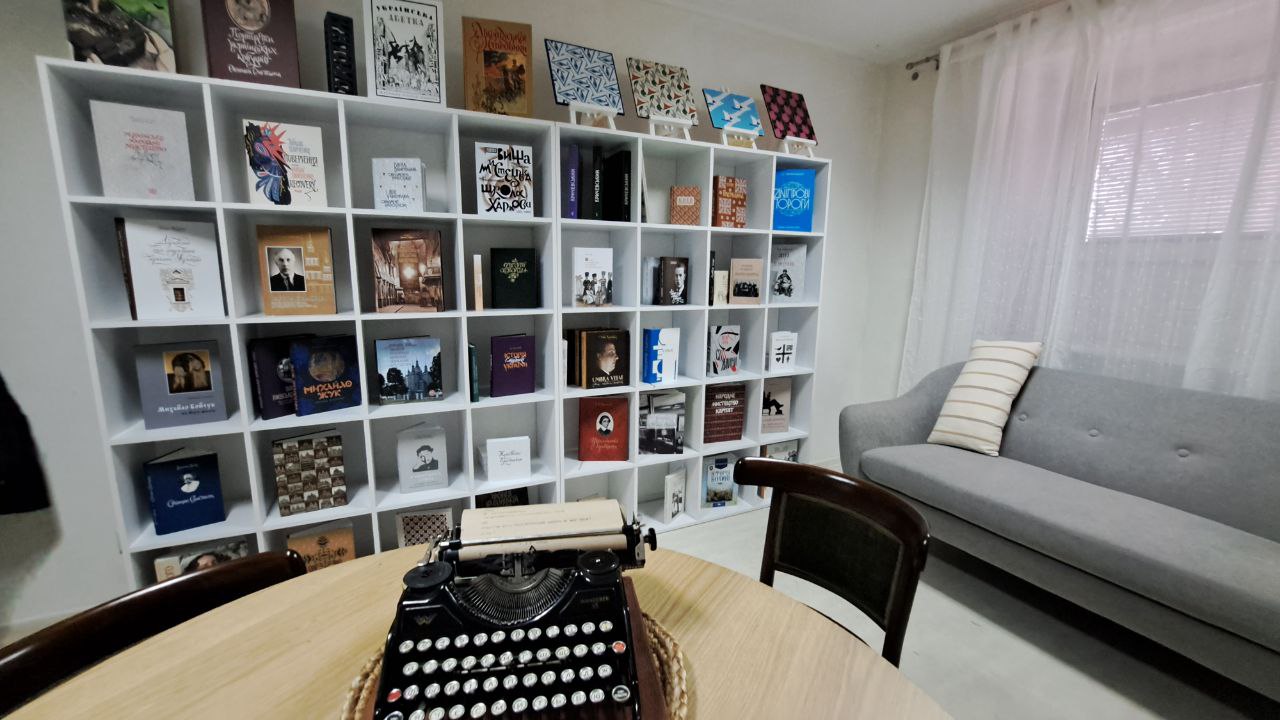
3806
Chytomo Spotlights
Amidst drone and missile attacks, Kharkiv publisher launches ‘Book Strongroom,’ a bomb shelter-bookstore, to preserve Ukrainian cultural heritage
15.12.2024 - Oleksandr Mymruk, Olesia Boiko
3701
Chytomo Spotlights
Kyiv Book Weekend: ‘Ukrainian book has gone beyond the “bubble” of well-known faces’
13.12.2023 - Mariia Horbach


